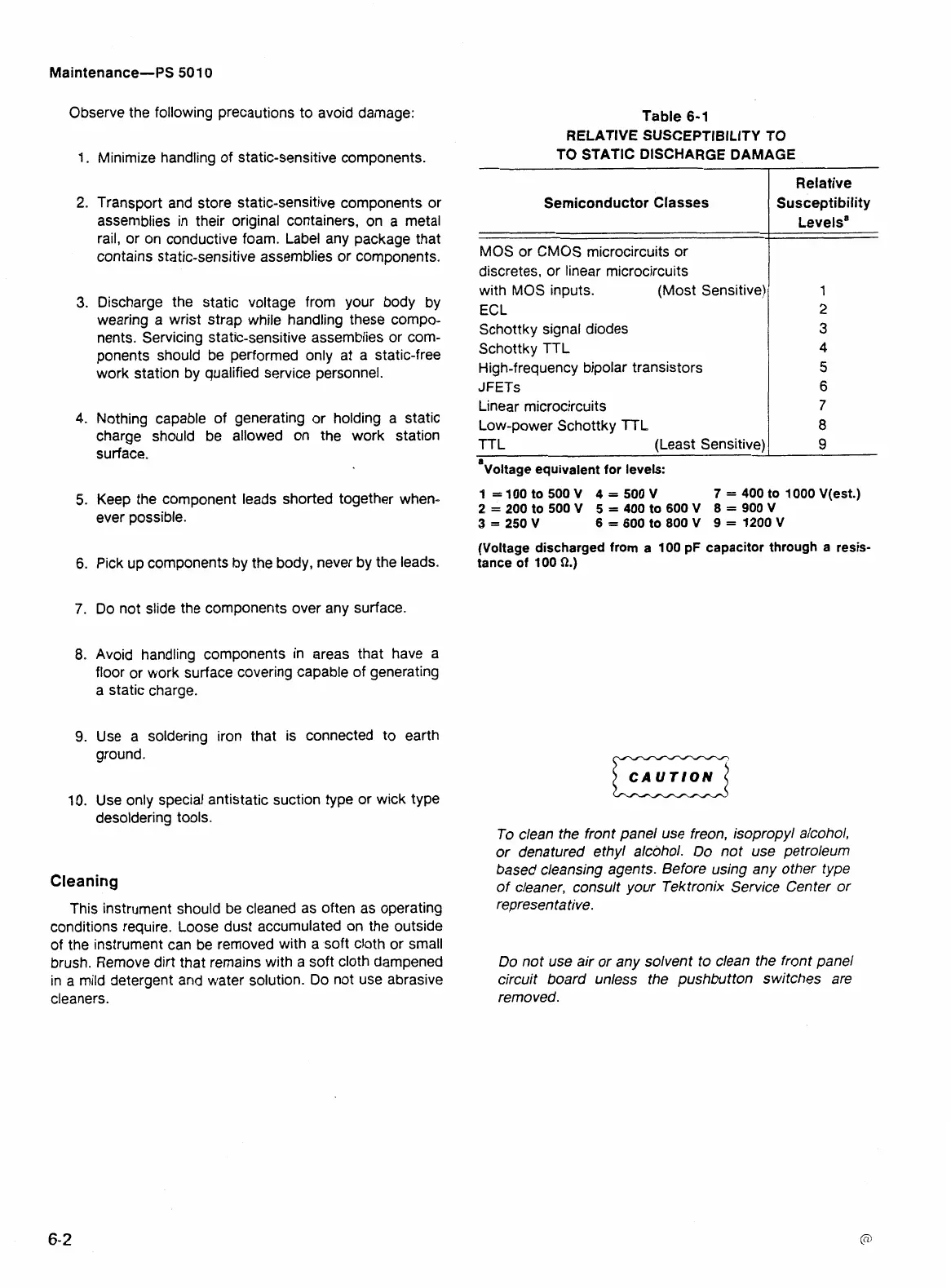Maintenance-PS 501
0
Observe the following precautions to avoid damage:
Minimize handling of static-sensitive components.
Transport and store static-sensitive components or
assemblies in their original containers, on a metal
rail, or on conductive foam. Label any package that
contains static-sensitive assemblies or components.
Discharge the static voltage from your body by
wearing
a
wrist strap while handling these compo-
nents. Servicing static-sensitive assemblies or com-
ponents should be performed only at a static-free
work station by qualified service personnel.
Nothing capable of generating or holding a static
charge should be allowed on the work station
surface.
Keep the component leads shorted together when-
ever possible.
Pick up components by
the body, never by the leads.
Do not slide the components over any surface.
Avoid handling components in areas that have a
floor or work surface covering capable of generating
a static charge.
Use a soldering iron that is connected to earth
ground.
Use only special antistatic suction type or wick type
desoldering tools.
Cleaning
This instrument should be cleaned as often as operating
conditions require. Loose dust accumulated on the outside
of the instrument can be removed with a soft cloth or small
brush. Remove dirt that remains with a soft cloth dampened
in a mild detergent and water solution. Do not use abrasive
cleaners.
Table
6-1
RELATIVE SUSCEPTIBILITY TO
TO STATIC DISCHARGE DAMAGE
Semiconductor Classes
MOS or CMOS microcircuits or
discretes, or linear microcircuits
with MOS inputs. (Most Sensitive)
ECL
Schottky signal diodes
Schottky TTL
High-frequency bipolar transistors
JFETs
Linear microcircuits
Low-power Schottky
TTb
TTL (Least Sensitive)
Relative
Susceptibility
'voltage equivalent for levels:
1
=I00
to
500V 4
=
500V
7
=
400
to
1000
V(est.)
2
=
200
to
500
V
5
=
400
to
600 V 8
=
900
V
3
=
250 V
6
=
600
to
800
V
9
=
1200
V
(Voltage discharged from a
100
pF capacitor through a resis-
tance of
10Q
R.)
CAUTION
a
To clean the front panel use freon, isopropyl alcohol,
or denatured ethyl alcohol. Do not use petroleum
based cleansing agents. Before using any other type
of cleaner, consult your Tektronix Service Center or
representative.
Do not use air or any solvent to clean the front panel
circuit board unless the pushbutton switches are
removed.

